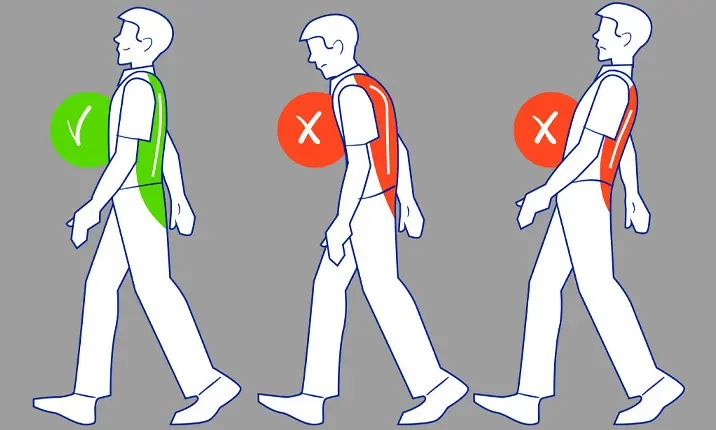Whether we're heading out with loved ones to the Changi Boardwalk, heading offshore to Pulau Ubin, or simply exploring Singapore's cultural hotspots for good food, we'll be walking. A lot. It's one of the simplest, most accessible ways to stay active, with a multitude of health benefits, including improved heart, lung and mental health.
But is there a right way to walk? Now this may not cross your mind often since it's so natural to just put one foot in front of the other and just... walk. However, there is indeed a "right" way to do it.
Dr Kannan Kaliyaperumal, orthopaedic specialist at Parkway East Hospital, defines the correct walking posture, and shares how you can correct your walking technique to optimise the benefits and avoid injuries.
Why walking correctly is good for you
Warming up and down pre- and post-walking, adopting a good walking technique, along with good posture, can provide many health benefits. Here are some of them:
- Preventing injuries and stress to the body
Walking correctly can help you avoid injury by placing less stress and impact on your muscles, tendons, soft tissues, and ligaments in your body. As a result, it can also help you walk faster and for longer, while helping you get fitter in the process. - Increased energy levels
Elongating your spine or standing tall while you walk can help you breathe easier and relieve aches and pains, improving energy levels as a result. - Better circulation
Adopting the right walking technique can keep your body aligned, promoting effective blood circulation to all parts of your body. - Improved digestion
Standing tall supports circulation to your digestive system, helping you better digest the food eaten prior to a walk. - Better balance
Walking can help build lower body strength, and doing so with the right posture can enhance this benefit. Improving your balance is especially pertinent as you age, as it protects you from falling and picking up a nasty injury. - Greater confidence
Improving your walking posture by standing upright can make you look better and boost your confidence. This comes with a host of benefits, including building resilience, and improvements in anxiety and depression over time.
How to walk right
Walking properly takes some fine adjustments and practice. Here are some tips on how to walk correctly, from head to toe.
- Warm Up, Cool Down
Incorporate this as part of your routine before and after a walk. Start at a slower pace during the first few minutes of your walk before you pick it up. Cool down by slowing down your pace during the last few minutes. - Keep your head parallel to the ground
Stand tall, keep your chin parallel to the ground and centered between your shoulders. Look straight ahead to help your head maintain this position. - Roll your shoulders
Rolling your shoulders up, back and then down can help you find the right resting position. - Swing your arms naturally
As you walk, let your arms swing naturally. Just ensure you swing from your shoulders and not from your elbows. - Relax your hands
Avoid clenching your hands. Keep them relaxed with palms facing inwards. - Lengthen your back
While walking, stand straight, and elongate your spine by imagining being lifted from the crown of your head, and your body will straighten in the process. You may have realised just how much you were slouching, hunching, leaning forward or backward – all of which should also be corrected. - Pull in your belly, slightly
Guilty of sticking our belly out as you walk? Make it a point to keep your belly pulled in slightly as you stand straight. This can help your abdominal muscles better support the trunk of the body and spine. - Walk with moderate strides
Walking with long strides can cause your knees to hyperextend, which can happen when your calf is pushing backwards to propel you forward. If you are going for a brisk walk and want to cover more ground faster, opt to take more steps, instead of longer strides. - Tread lightly, from heel to toe
Strike the ground with your heel first, then roll through your heel to your toe. Refrain from taking flat-footed steps, or striking the ground with your toes first. You should also keep your steps quiet and avoid putting your foot down with excessive force.
Risks of walking with improper technique and form
If you've been experiencing niggling pains for some time, improper walking form and posture may just be the culprit. The common issues you may face from not walking properly are lower back strain, neck pain and/or headaches.
Here is what you should stop doing to keep your form and posture in check:
Stop hyperextending your knee
This can happen when you take longer strides while walking, as opposed to shorter steps. As a result, your knee joint straightens past its normal range of motion, and your calf muscles lean backwards to propel you forward. This could cause you lower back strain, neck pain and headaches.
Stop extending your neck forward
When you extend your neck forward for a long period of time, it may cause inflammation, pain and swelling. You may also develop tension headaches.
Stop looking down as you walk
When you look down at your feet while walking, or if your shoulders are hunched forward, it can place a lot of strain on your neck and back.
Master the art of walking!
You may have thought there is not much to walking, but the correct walking posture can really benefit your health. To walk correctly – incorporate the changes shared above gradually, and practice them! If you are unsure about your walking gait and are feeling persistent pain in your body, speak to an orthopaedic specialist, or a physical therapist. Here's to more years of walking, and to the joys and benefits it brings!















